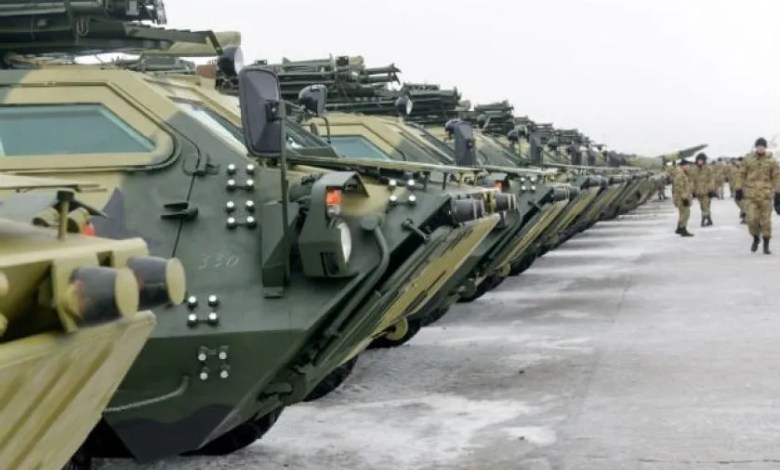
The world is a volatile place, a simmering pot of interconnected conflicts ready to boil over. From the Middle East to the Korean Peninsula, tensions are rising, fueled by a shifting global power dynamic and the increasing boldness of authoritarian leaders. And with the re-election of Donald Trump, a figure known for his unpredictable approach to foreign policy, the world is facing a new level of uncertainty.
Trump’s return to the White House has the potential to amplify these existing conflicts, driving them toward a dangerous escalation. His history suggests a willingness to take risks, potentially leading to unintended consequences. While his supporters may see this as a virtue, his opponents fear that his unpredictable nature could lead to miscalculations and even a full-scale war.
This article examines ten major conflicts that threaten international security, analyzing their current state and how they might be affected by a Trump presidency:
1. The Situation in Syria:
Following a dramatic regime change, Syria is now under the control of Hay’at Tahrir al-Sham (HTS), a former al-Qaeda branch. The situation is fraught with risk, as HTS attempts to establish governance in a country fractured by years of war. Tensions remain high between HTS and various minority groups, while external actors, including Israel and Turkey, continue to influence events. Trump’s potential actions regarding US troops stationed in Syria are a key factor, with a hasty withdrawal potentially exacerbating instability.
2. The Situation in Sudan:
Sudan is ravaged by a destructive civil war, with millions displaced and facing starvation. The conflict pits the Sudanese army against the Rapid Support Forces, a paramilitary group. The war threatens to spill over into neighboring countries and destabilize the entire Horn of Africa. Trump’s disinterest in Sudan and his potential deference to Gulf powers could further complicate the situation, with the risk of violent disintegration looming.
3. Ukraine and European Security:
The ongoing war between Russia and Ukraine poses a serious threat to European security. While Russia has the upper hand, both sides are exhausted and open to negotiations. The primary challenge is reaching a lasting ceasefire and ensuring Ukraine’s security. Trump’s approach remains uncertain, with the risk of him escalating the conflict through increased arms support for Ukraine or, alternatively, withdrawing US support and leaving Ukraine vulnerable.
4. Israel-Palestine:
The recent Israeli offensive in Gaza has devastated the territory and left the Israeli-Palestinian conflict in a more precarious state than ever. The Israeli government, under Prime Minister Netanyahu, has abandoned any pretense of a political solution, embracing a policy of unrestrained repression. Trump’s potential actions in this conflict are unclear, but his past record suggests that he will likely side with Israel, potentially fueling further violence and jeopardizing any hope of a lasting peace.
5. Iran, the U.S., and Israel:
The “Resistance Axis,” a collection of Iran-backed groups in the Middle East, has weakened in recent months, but Iran still possesses a formidable arsenal of missiles. The ongoing nuclear negotiations with Iran are complex and potentially volatile, and Trump’s approach, while unpredictable, could lead to a more aggressive stance that risks a regional war.
6. Haiti:
Haiti is in the grip of a brutal gang crisis, with the capital, Port-au-Prince, under siege. The transitional government has struggled to restore order, and the multinational police mission, led by Kenya, is facing significant challenges. Trump’s decision to focus on deporting Haitian migrants rather than providing aid could worsen the situation, potentially leading to a full-scale civil war.
7. The U.S.-Mexico Relationship:
Mexico is grappling with widespread violence related to drug cartels. Trump’s threats to impose tariffs and deport millions of migrants, even targeting cartels militarily, have the potential to exacerbate the situation, leading to economic turmoil and further violence.
8. Myanmar:
Myanmar is embroiled in a civil war between the military regime and various rebel groups. China has stepped in to support the military, but the regime remains vulnerable. Trump’s approach to Myanmar is unknown, but his likely focus on US interests could further isolate the country and worsen the humanitarian crisis.
9. The Korean Peninsula:
North Korea, under Kim Jong-un, has become increasingly aggressive, forging a mutual defense pact with Russia and sending troops to fight in Ukraine. This has significantly altered the security landscape on the Korean Peninsula. Trump’s return could lead to increased tensions, potentially fueling a dangerous escalation of the conflict.
10. U.S.-China Relations:
The US-China relationship is marked by escalating competition, with both sides vying for global influence. Trump’s return could reignite trade wars and further increase tensions surrounding Taiwan, the South China Sea, and other areas of contention.
The world is on a precipice. The conflicts discussed in this article are not isolated events, but rather interconnected threads that threaten to unravel the fragile fabric of international security. Trump’s re-election adds a layer of uncertainty that could push these conflicts towards a dangerous tipping point. The question is not whether these conflicts will escalate, but rather when and how. The world must prepare for a period of unprecedented instability and uncertainty.



